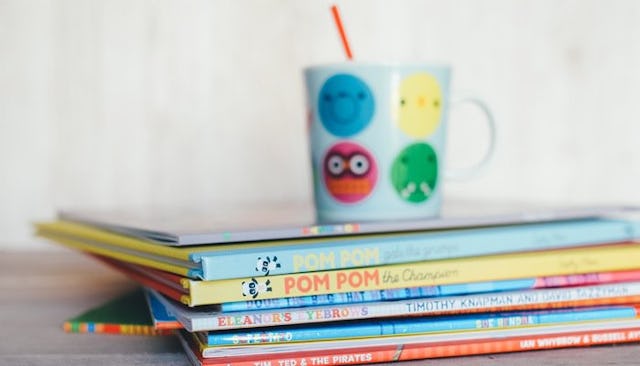Creative Ways To Foster A Love Of Reading In Your Kids

There are few greater pleasures than a cup of tea, a rainy day, a couch, and a good book. We all want our kids to experience that pleasure, and to do that, they need a love of reading.
Love of reading is tied to success in school. And the more kids practice reading, the better they get at it. The better they get at it, the more likely they are to do it. It’s a feedback loop. But other than forcibly sitting them down and making them read (which doesn’t work, by the way), there are plenty of ways to help them along the road to becoming a good reader.
We all know you should read to your kids. According to the NEA, only 53% of children ages 3 to 5 were read to daily in a 1999 study. This number could use improvement, but there are mitigating factors (like lack of resources) involved. You shouldn’t stop at just reading to your kids, though. You should let your kids read to you. Even tiny tots, who are pre-readers, can accomplish this task. They just have to know the book by heart, and that means you’ve read it to them about a million times.
We all know there are benefits to repeated reading, including boosted comprehension and simple pleasure and comfort. But one of the benefits is memorization. Memorization allows the child to sit down and read the book to you, instead of you reading it to them. This fosters a feeling of pride and mastery. Even once kids are older, asking them to read to you promotes family bonding and gives them a feeling of satisfaction (even if they don’t show it), especially as you praise them.
Speaking of memorization, memorizing things is a lifelong skill worth fostering. You can read poems aloud to your children, but poems feel differently in your mouth — when you’re saying the assonance and consonance — than when you’re feeling the rhythm in your own head. We help our kids memorize poetry as much as we possibly can. You can see their pride when I say, “Blaise, say your Robert Frost poem,” and he starts out, “Whose woods these are I think I know. His house is in the village though.” Hopefully, he’ll love reading poetry as much as he loves reading prose.
Another way you can promote a love of reading: Keep your damn bookshelves clean. Organized shelves, with all the books pointing the right way, preferably organized into categories, means that your child can easily locate books they want to read.
We used to neglect this and let the kids shove books every which way. It looked like a disaster, but I also noticed they brought us fewer books to read to them. Now that we’ve cleaned up the shelves, the baby won’t stop bonking me on the head with books, particularly about Halloween or hungry caterpillars.
You can also find big, glossy books based on your child’s interests. My kids are into dinosaurs, which makes it easy to find plenty of high-minded, way-above-their-heads, heavily illustrated dino books. They take them down and flip through them all the time. In fact, they’re some of the most popular books in the house for solo reading. Are they really reading them? In the case of my 6-year-old, maybe. But probably not. But they are using books to learn and dream — the gateway to Anna Karenina.
And make sure you don’t ignore the audiobooks. My kids listen to books on Audible every time we drive, and they love it. We had a book on Greek myth in daily rotation for weeks, and even months later, my 6-year-old will connect Achilles (the demigod) to the Achilles tendon. Audiobooks are a good way to burn up time otherwise spent in limbo while still helping your kids get read to. They just can’t see the book.
Read them Harry Potter, The Chronicles of Narnia, Alice in Wonderland, and read them Lloyd Alexander’s Prydain series. Read them books that make them dream, that make them fall into a world and live there for a while. There’s nothing like seeing a child get into a book like these.
We read Blaise Harry Potter and the Sorcerer’s Stone when he was only 4 because we wanted him to have the cultural touchstones in it. We wanted him to know who Hedwig and Dumbledore are, what Gryffindor and Slytherin are. He has now spent two years running around with a wand and screaming, “Impedimenta!” at people (we’ve gotten to book six by now). There is nothing in the world cuter than a tiny child yelling “Expecto Patronum!” at Halloween decorations. Nothing.
Try your best to give them quality literature. Of course, you’ve got to balance the more difficult Alice in Wonderland with some literary candy, but never lose sight of the big goal: to get your kids reading good, big books with big ideas and big feelings.
We need to make them love it, on Audible or the Kindle or the dang old written word. It’s part of our job as parents. And almost more importantly, it’s part of our job as book lovers. We need to bring our children into the fold. Otherwise, who will we talk to about the New York Times best-seller List?
This article was originally published on